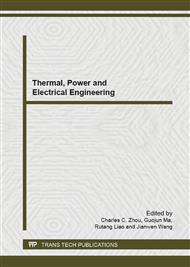p.413
p.417
p.421
p.426
p.432
p.436
p.443
p.451
p.457
Numerical Simulation of the Effects of Baffle on Flow Field in a Stirred Tank
Abstract:
Flow characteristics of stirred tanks with different structures were calculated by taking RNG k-ε model as the turbulent flow model. The results showed that at the same rotational speed, a large number of axial and radial vortexes were formed in the stirred tank with the baffle. The velocity in the blade area was high, and it decreased rapidly with the increasing distance to the blade. The double peak area of the radial velocity was formed in the stirred tank with baffle, and the high and low speed cycles were obtained in the cross-section. The baffle increased not only the axial circulation of the liquid in the tank but also the radial circulation, which help to mix the liquid.
Info:
Periodical:
Pages:
432-435
Citation:
Online since:
August 2013
Authors:
Keywords:
Price:
Сopyright:
© 2013 Trans Tech Publications Ltd. All Rights Reserved
Share:
Citation:


